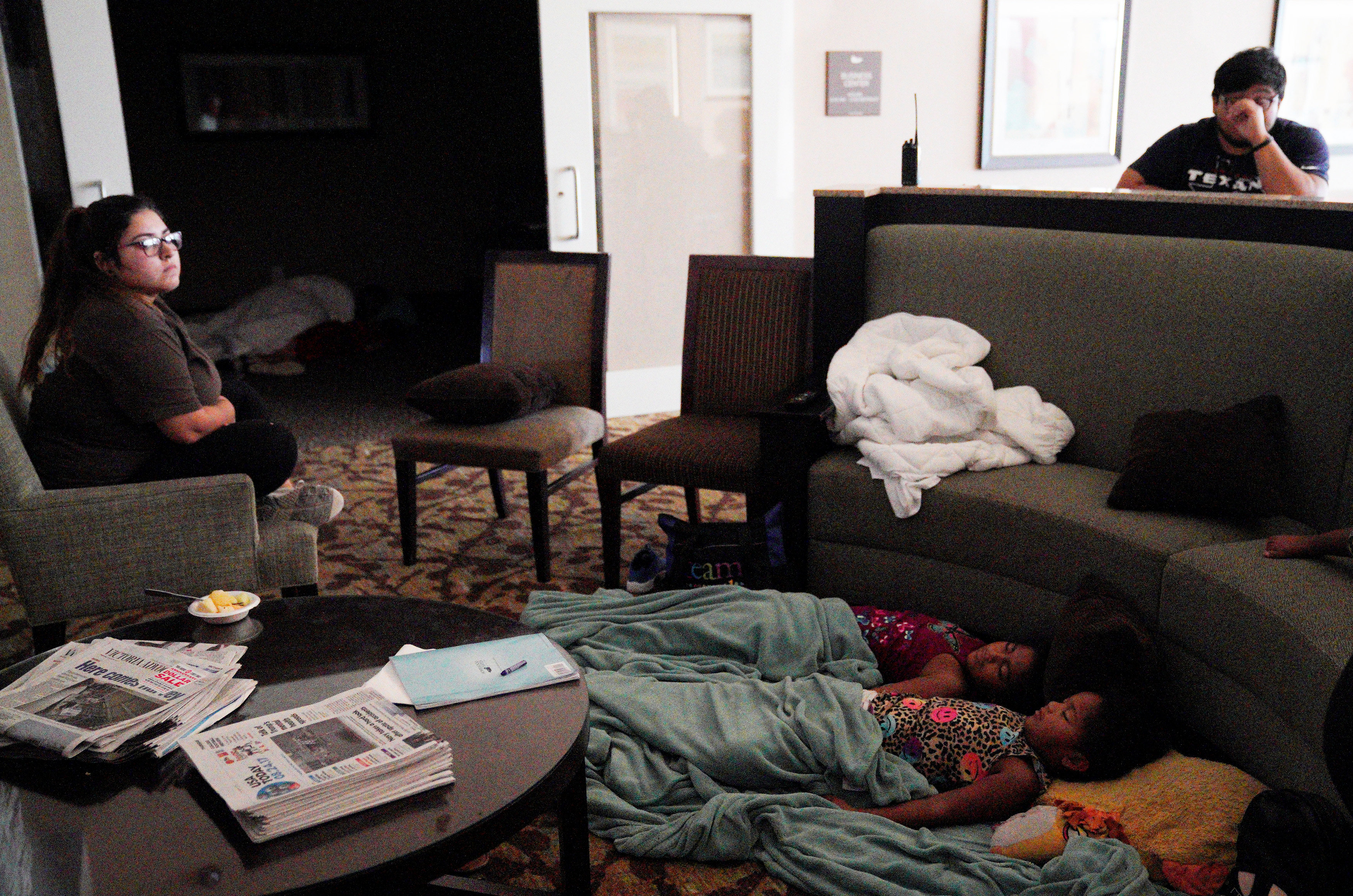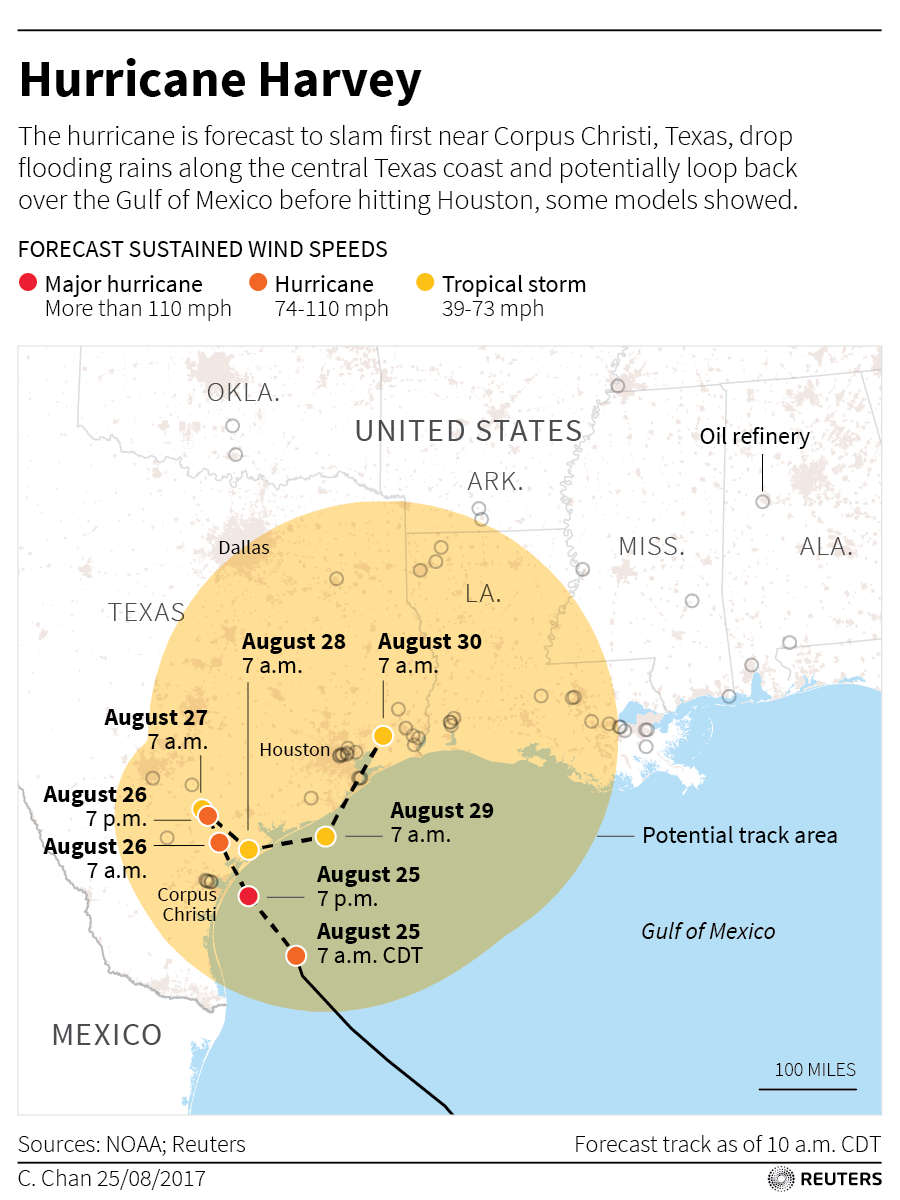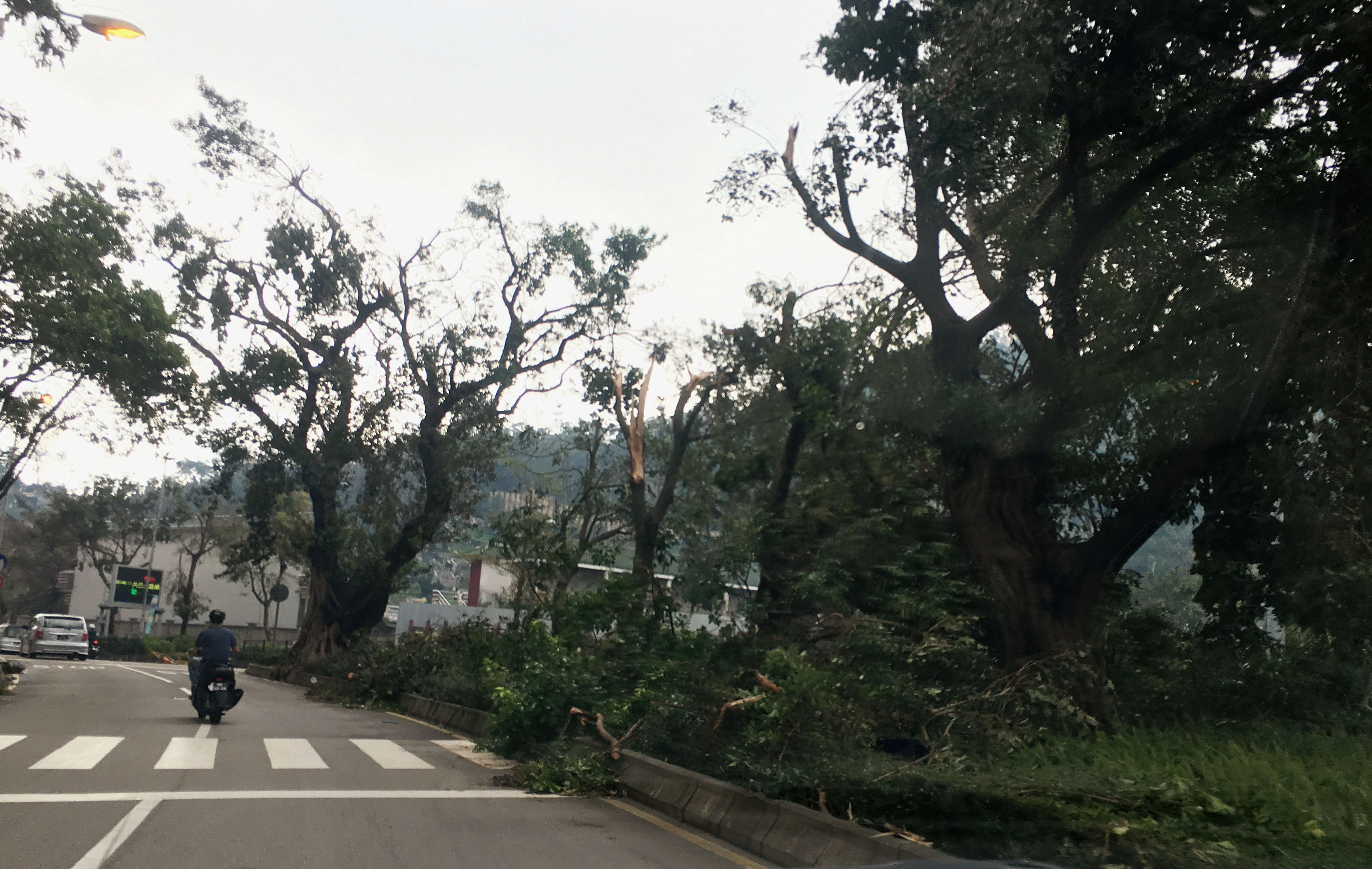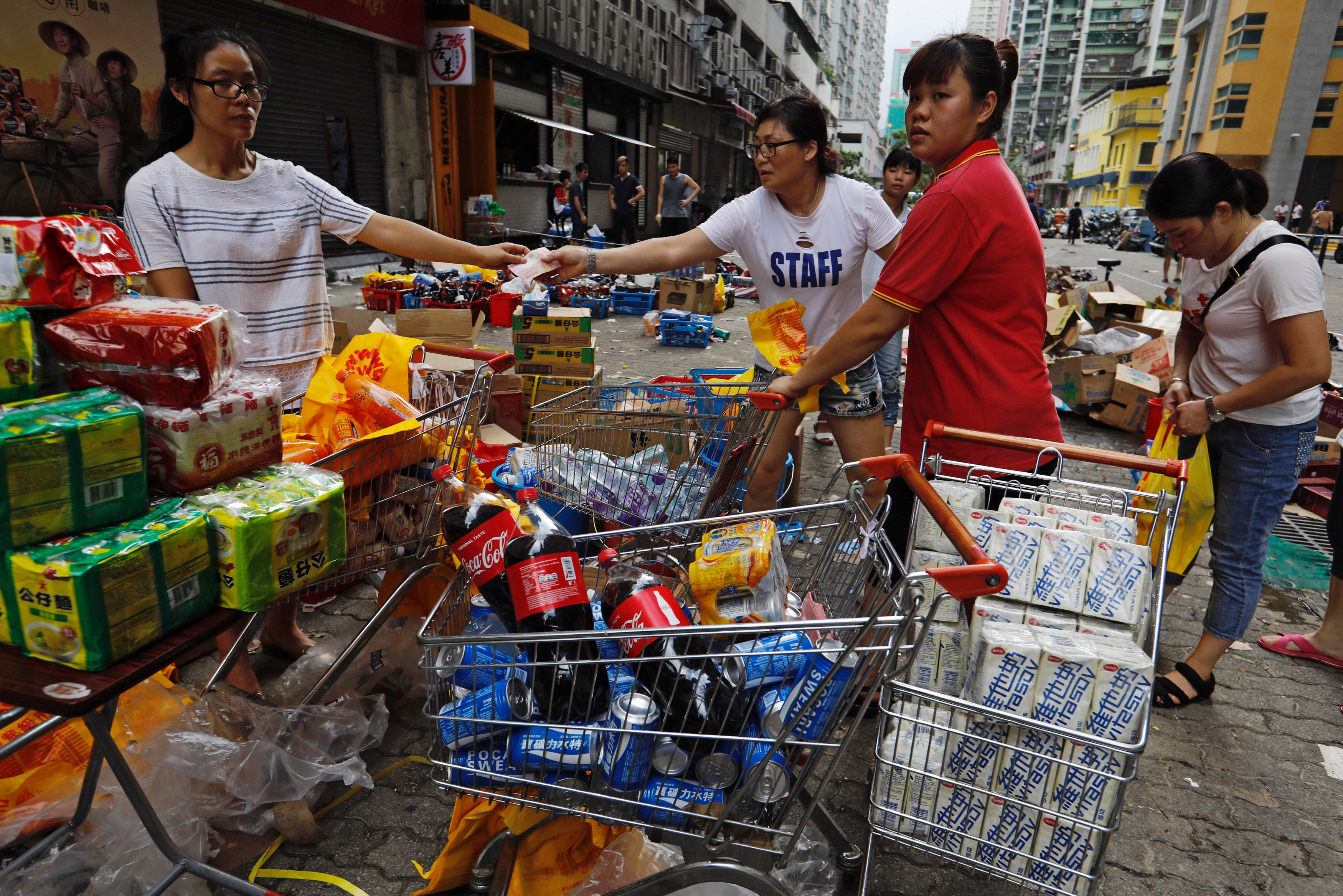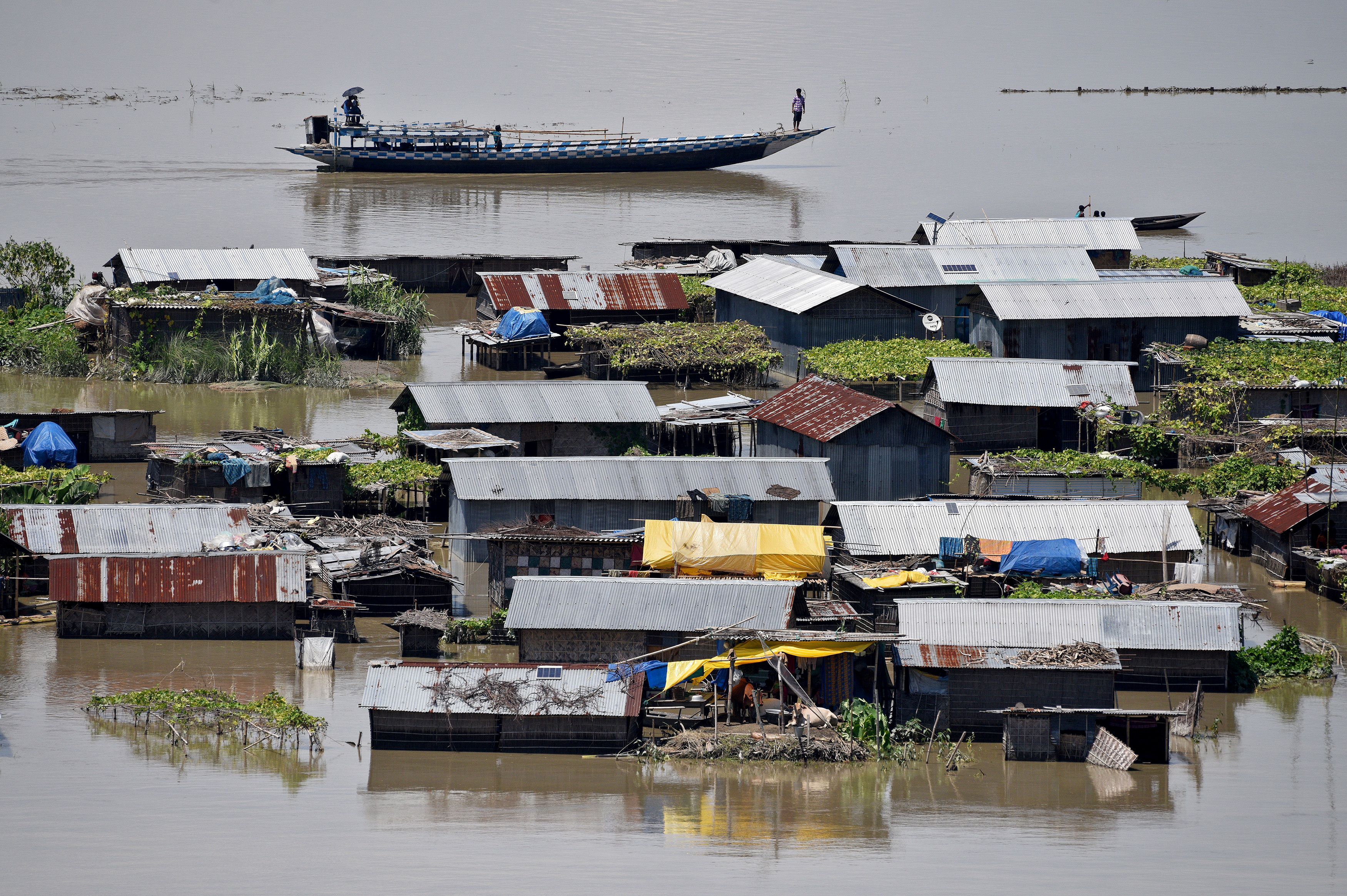
By Mica Rosenberg and Erwin Seba
HOUSTON (Reuters) – U.S. President Donald Trump planned to visit Texas on Tuesday to survey the response to devastating Tropical Storm Harvey, the first major natural disaster of his White House tenure, even as the lingering storm pushed floodwaters higher.
The slow-moving storm has brought catastrophic flooding to Texas, killed at least nine people, led to mass evacuations and paralyzed Houston, the fourth most-populous U.S. city. Some 30,000 people were expected to seek emergency shelter as the flooding entered its fourth day.
Harvey had also roiled energy markets and wrought damage estimated to be in the billions of dollars, with rebuilding likely to last beyond Trump’s current four-year term in office.
“My administration is coordinating closely with state and local authorities in Texas and Louisiana to save lives, and we thank our first responders and all of those involved in their efforts,” Trump told reporters at the White House on Monday.
Trump was scheduled to arrive on Tuesday morning in Corpus Christi, near where Harvey came ashore on Friday as the most powerful hurricane to strike Texas in more than 50 years. The president will later go to the Texas capital Austin to meet state officials, receive briefings and tour the emergency operation center, the White House said.
Much of the Houston area remained underwater on Tuesday, and dangerous rescues went on through the night as police, firefighters and National Guard troops in helicopters, boats and trucks pulled stranded residents from flooded homes.
Officials believed about 1,000 households remained to be rescued, Houston Fire Chief Samuel Pena told ABC’s “Good Morning America.”
“We keep getting wave after wave after wave of rain and so that’s not calming the situation,” Pena said.
Forecasters drew comparisons to Hurricane Katrina, which lay waste to New Orleans and killed 1,800 people in 2005.
The administration of then-President George W. Bush drew accusations that his response was slow and inadequate – criticism that dealt a serious blow to his presidency.
Some who fled the rising floodwaters found they had few options, as roads were washed out and emergency services overloaded.
Emely Gonzalez, 21, said she took her wheelchair-bound mother to a hospital but was turned away because doctors determined her condition was not an emergency. Having left the woman’s oxygen tank at home, her friend Chris Pastor had to head back to the flooded home by kayak to retrieve it and had to swim back.
“It was just a very delicate situation,” Pastor said. The group later made it to safety in a hotel.
Before Harvey, the last Category 4 hurricane to make landfall in Texas was Carla in 1961. Its high winds and torrential rains destroyed about 1,900 homes and nearly 1,000 businesses, the National Weather Service said.

Residents use boats to evacuate flood waters from Tropical Storm Harvey along Tidwell Road east Houston, Texas, U.S. August 28, 2017. REUTERS/Adrees Latif
RUNWAYS TURNED INTO LAKES
Among the most recent deaths from Harvey was a man who drowned on Monday night while trying to swim across flooded Houston-area roads, the Houston Chronicle quoted the Montgomery County Constable’s Office as saying.
The storm center was in the Gulf of Mexico about 115 miles (185 km) southeast of Houston on Monday morning. It was likely to remain just off the coast of Texas through Tuesday night before moving inland over the northwestern Gulf of Mexico on Wednesday, according to the U.S. National Hurricane Center.
Since coming ashore, Harvey has virtually stalled along the Texas coast, picking up warm water from the Gulf of Mexico and dumping torrential rain from San Antonio to Louisiana.
The Houston metro area has suffered some of the worst precipitation with certain areas expected to receive more than 50 inches (127 cm) of rain in a week, more than it typically receives for a year.
Harvey was expected to produce another 7 to 13 inches (18-33 cm) of rain through Thursday over parts of the upper Texas coast into southwestern Louisiana, the National Weather Service said.
“These stationary bands of tropical rain are very hard to time, very hard to place and are very unpredictable,” said Alek Krautmann, a weather service meteorologist in Louisiana.
Schools and office buildings were closed throughout the Houston metropolitan area, where 6.8 million people live.
The Federal Emergency Management Agency director Brock Long estimated that 30,000 people would eventually be housed temporarily in shelters.
Houston and Dallas have set up shelters in convention centers and Austin was preparing to house as many as 7,000 evacuees. More than 9,000 people packed into an overcrowded shelter in Houston, a Red Cross spokesman told CNN.
Hundreds of Houston-area roads were blocked by high water. The city’s two main airports were shut as the floods turned runways into ponds and more than a quarter million customers were without power as of Tuesday morning.
The Gulf of Mexico is home to half of U.S. refining capacity. The reduction in supply led gasoline futures to hit their highest level in two years this week as Harvey knocked out about 13 percent of total U.S. refining capacity, based on company reports and Reuters estimates.
The floods could destroy as much as $20 billion in insured property, making the storm one of the costliest in history for U.S. insurers, according to Wall Street analysts.
The Brazos River, one of the longest in the country, was forecast to crest at record highs well above flood levels on Tuesday about 30 miles (49 km) southwest of Houston, prompting authorities in Fort Bend County to order the evacuation of about 50,000 people.
For a graphic on storms in the North Atlantic, click: http://fingfx.thomsonreuters.com/gfx/rngs/STORM-HARVEY/010050K2197/index.html
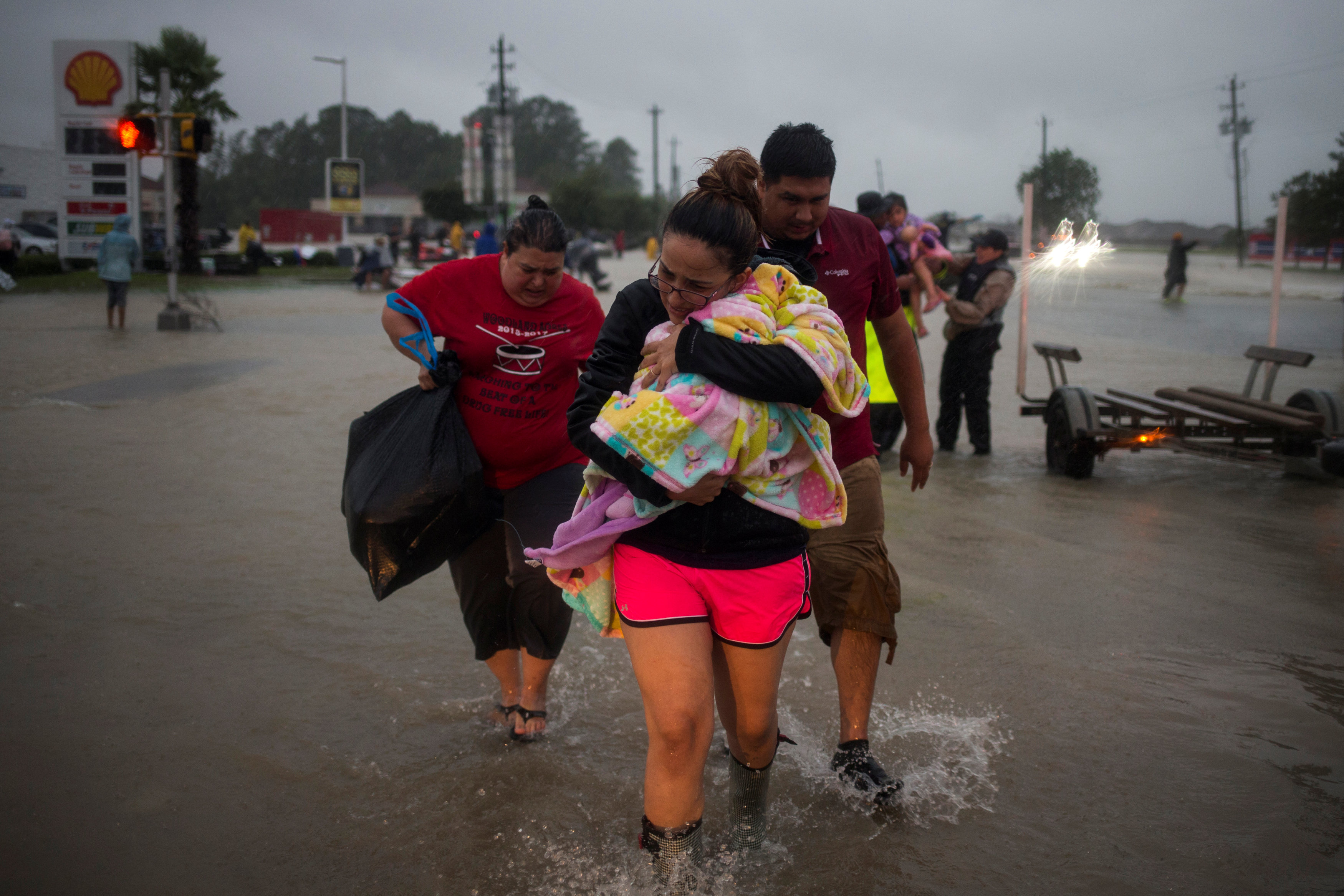
A family arrives to high ground after they fled their home due to floods caused by Tropical Storm Harvey along Tidwell Road in east Houston, Texas, U.S. August 28, 2017. REUTERS/Adrees Latif
(Additional reporting by Peter Henderson, Mica Rosenberg, Erwin Seba, Nick Oxford and Ruthy Munoz in Houston, Andy Sullivan in Rockport, Texas, Jon Herskovitz in Austin, Steve Holland and Jeff Mason in Washington and Brendan O’Brien in Milwaukee; Writing by Scott Malone and Jon Herskovitz; Editing by Mark Heinrich and Chizu Nomiyama)

